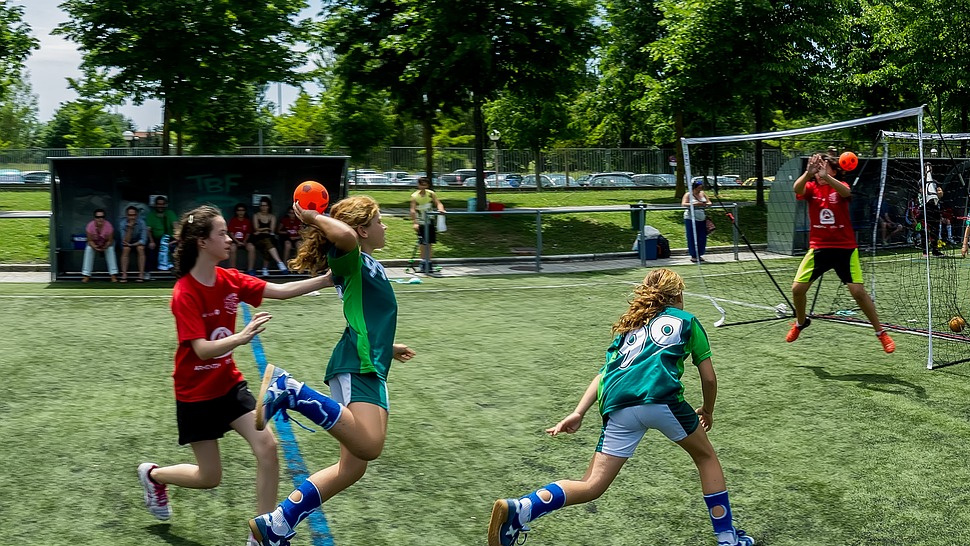In today's digital age, where screens dominate much of our lives, outdoor play has become more important than ever for children. Engaging in outdoor activities helps kids develop essential motor skills, improve their fitness levels, and foster creativity. Physical development is a critical aspect of a child's overall growth, and outdoor play offers unique opportunities for children to move, explore, and build healthy habits that last a lifetime.
Why Outdoor Play Matters
Outdoor play allows children to move their bodies in ways that indoor activities cannot always provide. Running, jumping, climbing, and balancing are essential for building gross motor skills. Activities like drawing with chalk, picking up small objects, or building sandcastles improve fine motor skills.
Beyond motor skills, outdoor play contributes to physical fitness. It helps improve cardiovascular health, build strong bones and muscles, and maintain a healthy weight. The freedom to move and explore outdoors also enhances a child’s spatial awareness and coordination.
Additionally, exposure to sunlight during outdoor play is a natural way to boost Vitamin D levels, which are vital for bone development. Being outside also has mental health benefits, reducing stress and promoting better sleep.
Strategies for Parents
Parents play a key role in encouraging outdoor play. Here are some practical strategies to help your child make the most of their time outside:
Create a Daily Routine for Outdoor Play
Set aside specific times each day for outdoor activities. It could be a morning walk, a visit to the park after school, or playtime in the backyard before dinner. Consistency helps children look forward to outdoor play as part of their routine.
Provide Age-Appropriate Equipment
For younger children, simple toys like balls, jump ropes, or tricycles are great for encouraging movement. Older kids might enjoy scooters, bicycles, or sports equipment like basketballs or soccer balls.
Lead by Example
Children are more likely to enjoy outdoor activities when they see their parents participating. Join in the fun by playing tag, tossing a frisbee, or hiking together as a family.
Encourage Unstructured Play
Let your child take the lead during outdoor play. Whether it’s climbing a tree, pretending to be a superhero, or building a fort, unstructured play promotes creativity and problem-solving skills.
Explore Nature Together
Nature offers endless opportunities for physical activity. Take your child to the beach to run on the sand, hike through a forest trail, or explore a local botanical garden. These activities not only boost physical development but also foster a love for the outdoors.
Strategies for Educators
Educators can also play a significant role in promoting outdoor play within school settings. Here are some strategies to consider:
Incorporate Outdoor Play into the Curriculum
Design lessons that involve physical activities, such as nature scavenger hunts, gardening, or group sports. This makes learning active and engaging.
Ensure Safe and Stimulating Outdoor Spaces
Provide access to playgrounds with equipment suitable for various age groups. Ensure the area is safe, clean, and filled with materials that encourage exploration, like sand, water, and natural elements.
Organize Structured Activities
While unstructured play is essential, structured activities like relay races, obstacle courses, or team sports can teach valuable skills like teamwork and goal-setting.
Promote Inclusivity
Make outdoor play accessible to all children, including those with physical disabilities. Adapt activities and equipment to ensure every child can participate and benefit from physical development opportunities.
Educate About the Importance of Outdoor Play
Share information with parents and guardians about the benefits of outdoor play. Host workshops or send newsletters to encourage families to prioritize outdoor activities at home.
Overcoming Barriers to Outdoor Play
While outdoor play is essential, many families face challenges like limited time, safety concerns, or a lack of access to green spaces. Here are some tips to address these barriers:
Time Management: Encourage short bursts of outdoor activity, even if it’s just a 10-minute walk or playing catch in the driveway.
Safety First: Choose safe, well-maintained spaces for outdoor play and teach your child basic safety rules.
Creative Use of Space: If you don’t have a backyard, consider nearby parks, school playgrounds, or community centers for outdoor activities.
Conclusion
Outdoor play is a cornerstone of a child's physical development. It strengthens their bodies, sharpens their motor skills, and encourages a lifelong love for active living. As parents and educators, it’s our responsibility to prioritize outdoor activities and create opportunities for children to enjoy the benefits of fresh air, sunlight, and movement. By making outdoor play a regular part of their lives, we can help our children grow healthier, happier, and more resilient.
So, step outside, explore nature, and let the joy of outdoor play shape the future of our children!




Share the News